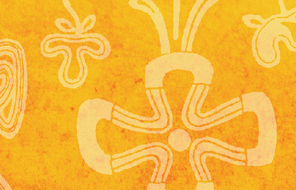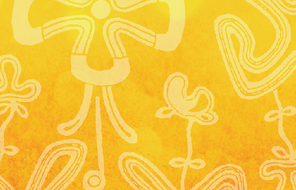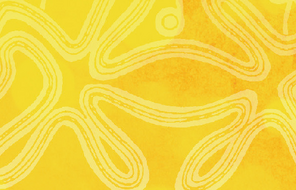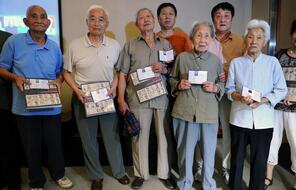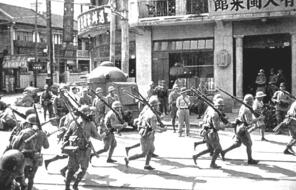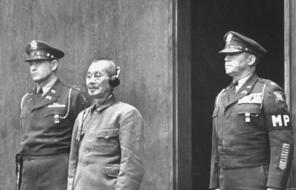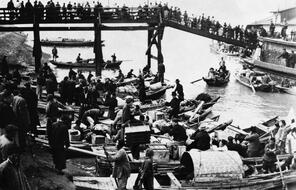A Nation’s Past
At a Glance
Language
English — USSubject
- History
- Genocide
Decades after the end of World War II in China, Sino-Japanese relations continue to remain strained. Conflicting memories and accounts of imperial Japan’s occupation of China and wartime atrocities remain one element of this discord. One of the most visible expressions of this tension arises regularly at the Yasukuni shrine.
Built near Tokyo in 1869 on orders from the Meiji emperor to console the spirits of those who sacrificed their lives to restore political power from the Tokugawa shoguns to the emperor, this Shinto shrine has become a focal point for national tensions between China and Japan. Hua Chunying, a Chinese foreign ministry spokesperson, describes visiting the shrine as a “blatant attempt to whitewash Japanese militarism’s history of aggression and to challenge the outcomes of the Second World War and the post war international order.” For Japan, state or individual visits to the shrine are explained as simply paying “homage to those who died in the war.” 1
To appreciate the tensions surrounding Yasukuni, it is important to understand the role Shinto shrines play in Japanese society. Shinto is the Indigenous faith of the Japanese people and has existed as a unifying system of beliefs and rituals for centuries. One important element of the Shinto faith is kami, sacred spirits embodied in forms important to life such as elements found in nature—wind, air, water, and mountains. Human and human forms can also become kami after death and are revered by family members as ancestral kami. The kami of extraordinary people in Japan are preserved in hundreds of shrines throughout the country including those for the imperial family, those dedicated to powerful clans, those for rice, and those dedicated to who died during war in the service of the nation such as at Yasukuni.
What we know as the Yasukini shrine was completed and named in 1879. The name originates from the classical Chinese text Zuo Zhuan and literally means “pacifying the nation.” Soon after being built, Yasukuni became one of Japan’s and one of Shinto’s principal shrines combining the values of the State with Shinto beliefs. From this point forward the Meiji emperor visited the Yasukuni shrine twice a year to honor the spirits enshrined—once in the fall and once in the spring. With this ritual and the relationship of the emperor with the shrine, the sacrifice of dying in battle became associated with the highest of Japanese honors. The spirits of those who died in battle would hereafter be enshrined at Yasukuni and be assured of an emperor’s visit.
Over time the shrine included kami not only for soldiers but also for those who sacrificed their lives for the “public duty of protecting their motherland.” The shrine’s official website reads:
Currently, more than 2,466,000 divinities are enshrined here at Yasukuni Shrine. These are souls of men who made ultimate sacrifice for the nation since 1853 during national crisis such as the Boshin War, the Seinan War, the Sino-Japanese and Russo- Japanese wars, World War I, the Manchurian Incident, the China Incident, and the Greater East Asian War (World War II). These people, regardless of their rank or social standing, are considered to be completely equal and worshipped as venerable divinities of Yasukuni.
Japanese people believe that their respect to and awe of the deceased is best expressed by treating the dead in the same manner as they were alive. Hence, at Yasukuni Shrine, rituals to offer meals and to dedicate words of appreciation to the dead are repeated every day. And, twice every year—in the spring and autumn—major rituals are conducted, on which occasion offerings from His Majesty the Emperor are dedicated to them, and also attended by members of the imperial family.
Thus, Yasukuni Shrine has deep relationship with the Japanese imperial family. Also, five million people visit the shrine every year since it is known as a central institution for commemorating those who died in wars. 2
Excluded from the description on the shrine’s website are the specific rank and role of some of the fallen soldiers from wars past. After World War II 14 convicted Class A war criminals (including both Matsui and Hirota) and 1,054 Class B and Class C war criminals from the Tokyo Trials were all enshrined. 3 The website also avoids explaining the ongoing controversy that erupts when Japanese political leaders choose to visit the shrine, and particularly when they visit on August 15—the day set aside to commemorate Japan’s surrender ending World War II.
In December 2013, Japan’s prime minister Shinzo Abe visited the Yasukuni shrine. One month later in January 2014, the New York Times reported:
On the surface, the Yasukuni compound offers a typical vignette of Japan, with its meticulously maintained gardens and the graceful movements of its Shinto priests. But just a short stroll from the main shrine, the visitor finds a consecration of lies and half-truths that tarnishes Japan’s post-1945 ascendancy: the Yasukuni War Museum.
Here are historical narratives that glorify Japan’s brutal colonization of Korea from 1910 to 1945 and the 1937 invasion of China, which involved the massacre of hundreds of thousands of Chinese civilians. The attack on Pearl Harbor is even presented as contributing to “world peace.”
The museum also houses a memorial to the Indian jurist Radhabinod Pal, who was the sole judge on the postwar International Military Tribunal for the Far East to argue that all the Japanese defendants were not guilty. The message is clear: Japan fought for peace, fell victim to the more powerful Allies, and was served victor’s justice. . . .
Mr. Abe may have intended, as he said, simply to pray for the souls of his nation’s war dead. But in the eyes of the world, his pilgrimage to the Yasukuni Shrine appeared a willful evocation of Japan’s pre-1945 imperialism and repudiation of its post-1945 legacy of peace.” 4
Connection Questions
- According to the New York Times, what makes an official visit by a Japanese leader to the Yasukuni shrine so controversial?
- Do public officials have a unique responsibility to be sensitive to sites of memory that have controversial issues such as Yasukuni?
- Compare the description of the Shrine from its own website as compared to the description of the Shrine from the New York Times. What differences are most apparent? How do you explain those differences? How does your understanding of the Nanjing Atrocities influence the way you evaluate the language?
- Some Japanese nationalists view visits to Yasukuni as a ritual to honor their nations’ fallen, whereas others view it as politically provocative and insensitive to victims of war crimes and their descendants? What gives rituals, like the one at Yasukuni so much power? If you were to try to explain to the Japanese Prime Minister why visiting the shrine causes so much pain and anger, what would you say?
- Visits by politicians to sites of controversy is not unique to Japan, but has occurred in other countries as well. In 1985 West German Chancellor Helmut Kohl accompanied US President Ronald Reagan in a honorary wreath laying ceremony at a cemetery in Bitburg, West Germany. Amongst the 2,000 German soldiers buried in Bitburg were the graves of 49 Waffen-SS troops. During World War II in Europe the SS were the racial elite of the Nazi party who wielded incredible power over state security, including the German police forces and concentration camp system. By 1941 they planned, controlled and directed the so-called Final Solution. In choosing to visit the cemetery where such men were buried vocal critics of Reagan’s visit claimed he was honoring them by honoring their memory. The visit was supposed to be a gesture of reconciliation between the two nations. Instead, an international controversy erupted because of the known status of these SS officers.
In covering the visit, the New York Times reported White House aides acknowledging the visit as “the biggest fiasco of Mr. Reagan’s Presidency.” When asked about the controversy, Mr. Reagan voiced regrets afterward saying “old wounds have been reopened.” What do you think the president and his staff learned from the experience at Bitburg? How is the story similar and different to the story in the reading? - On May 8, 1985, president of the Federal Republic of Germany Richard von Weizsäcker gave the following speech:
Remembering means recalling an occurrence honestly and undistortedly so that it becomes a part of our very beings. This places high demands on our truthfulness.
...There is no such thing as the guilt or innocence of an entire nation. Guilt is, like innocence, not collective, but personal... The perpetration of this crime was in the hands of a few people. It was concealed from the eyes of the public, but every German was able to experience what his Jewish compatriots had to suffer, ranging from plain apathy and hidden intolerance to outright hatred. Who could remain unsuspecting with the Star of David, the deprivation of rights, the ceaseless violation of human dignity? Whoever opened his eyes and ears and sought information could not fail to notice that Jews were being deported.
...There were many ways of not burdening one’s conscience, of shunning responsibility, looking away, keeping mum. When the unspeakable truth of the Holocaust then became known at the end of the war, all too many of us claimed that they had not known anything about it or even suspected anything.
The vast majority of today’s population were either children then or had not been born. They cannot profess a guilt of their own for crimes that they did not commit.... But their forefathers have left them a grave legacy. All of us, whether guilty or not, whether old or young, must accept the past. We are all affected by its consequences and liable for it. The young and old generations must and can help each other to understand why it is vital to keep alive the memories. It is not a case of coming to terms with the past. That is not possible. It cannot be subsequently modified or made not to have happened. Anyone who closes his eyes to the past is blind to the present. Whoever refuses to remember the inhumanity is prone to new risks of infection.
Choose one sentence from President von Weizsäcker’s speech that you agreed with and explain why. Similarly, choose one sentence that you disagree and explain why. How does it relate to the story of the Yasukuni Shrine?
- 1Justin McCurry, “China summons Japanese ambassador over war shrine visit,” The Guardian, October 18, 2013, accessed November 13, 2013.
- 2“About Yasukuni Shrine,” Yasukuni shrine website, accessed May 22, 2014.
- 3Note: Class A war criminals were, generally speaking, leaders at the national level who conspired or ordered to wage aggressive war crimes against peace. Class B and Class C were those who committed war crimes such as the murder of POWs or crimes of omission. The Class A criminals enshrined at Yasukuni are Tojo Hideki, Hirota Koki, Doihara Kenji, Nagano Osami, Matsui Iwane, Matsuoka Yosuke, Muto Akira, Togo Shigenori, Koiso Kuniaki, Hiranuma Kiichiro, Kimura Heitaro, Itagaki Seishiro, Shiratori Toshio, and Umezu Yoshijiro.
- 4 Sung-Yoon Lee, “Abe’s Profane Pilgrimage,” New York Times, January 6, 2014.
How to Cite This Reading
Facing History & Ourselves, "A Nation’s Past," last updated May 12, 2020.
This reading contains text not authored by Facing History & Ourselves. See footnotes for source information.

